Bill Vogeney—or “Vog” as he’s known in enthusiast circles—is a long-time Scotty Cameron collector with an extensive collection of rare and hand-crafted putters from Scotty’s early career. From time to time, we will feature articles from Vog in this new series to provide context, history and interesting back-story to Scotty’s evolution as a putter maker.
I remember it well. Thanks to some good fortune, my wife and I attended the first two rounds of the 1993 Masters tournament. Little did I realize while walking the grounds that the tournament would be won using a Scotty Cameron putter, then known as the Classic I. The putter was developed to appeal to players who were using a design that had become very popular on tour over almost three decades. Yet Scotty had a dream to make a better version, precision milled from carbon steel, for greater consistency and a softer feel.
I wasn’t in the dark about Scotty’s putters because I already had my first Cameron. The visit to Augusta also included a trip to a local golf shop that had one (only one) early Cameron mallet that I gladly added to my collection, which doubled that day! The Classic I hadn’t been introduced to the retail market yet, and I didn’t follow the eventual winner around Augusta those two days. But ever since the '93 Masters, Scotty has been refining the design of that original putter now known as the Newport. Along with the Newport 2, they have been Scotty’s most popular putters for 30 years.
Since we recently watched the 2024 Masters, is there a better subject to take on for the second installment of The Collector’s Corner? While I can’t possibly cover every change to the Newport over 30 years, I’ll highlight the landmark versions of the Newport and the enhancements brought to the design. While I’m geeking out, I’ll show you some interesting versions of the Newport that might appeal to the serious Cameron collector as well.
BEFORE THE NEWPORT - SCOTTY'S EARLY PROTOTYPES
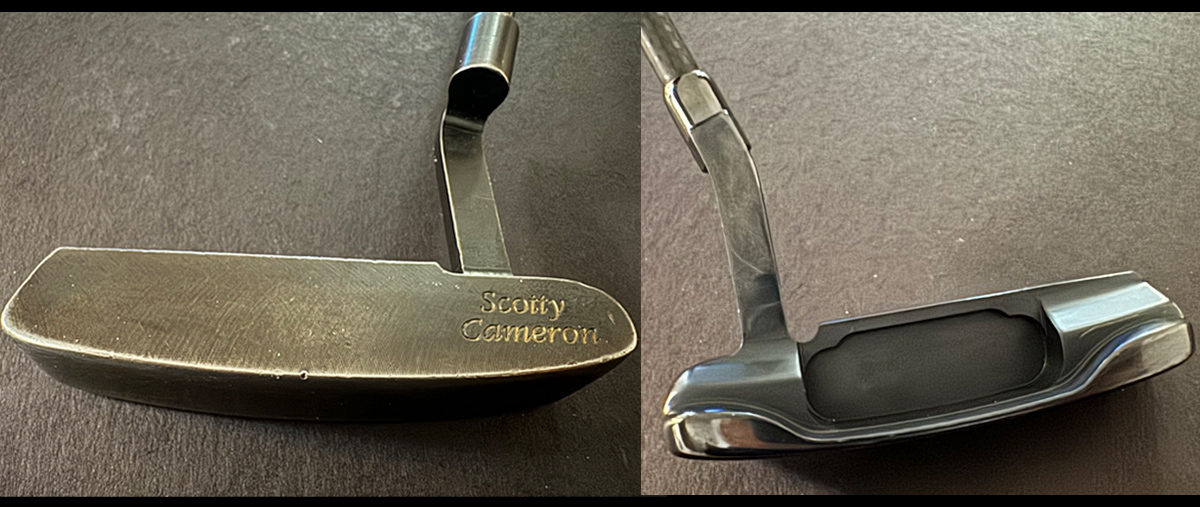
Above: Here are pictures of two different early prototypes that have the exact same design as the putter used to win the Masters in 1993. Compared to that putter, only the engraving is different, which was used on a small run of maybe 25 to 50 putters for the tour. These rare prototypes are the “stubbiest” of all the versions of the Classic I or Newport I’ve identified. When I look at one of these putters, the head looks shorter from heel to toe, with the line of the shoulders rounded into the heel; all this was crafted by hand and each putter is a little different as a result. These early prototypes are surprisingly light as probably half the ones I own are 35.5” or 36” long to compensate for the light weight.
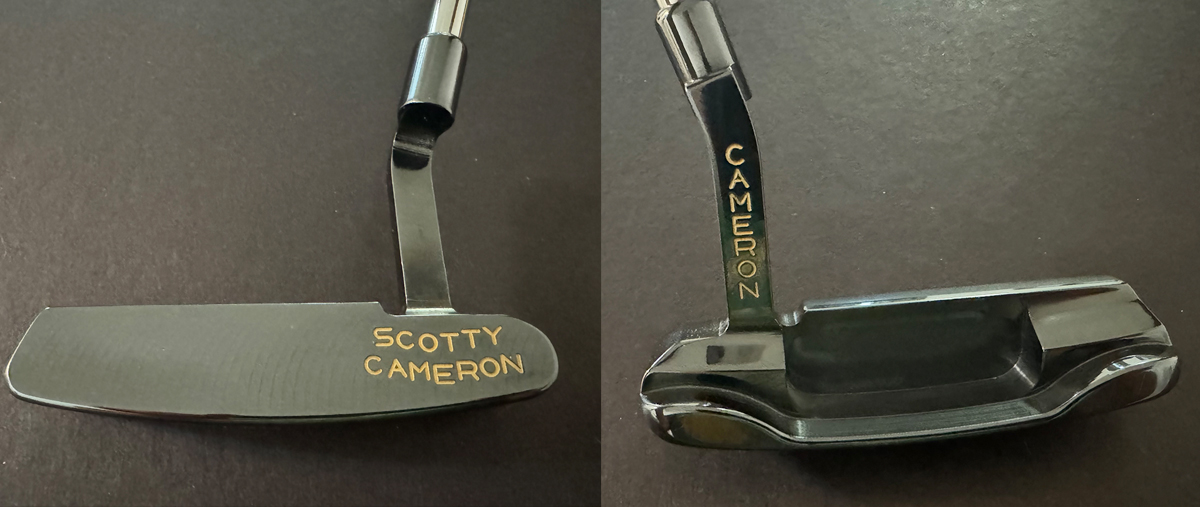
Above: This is the final design variation of the Classic I, made in 1993 and 1994 until Scotty joined Titleist. Compare the look of the heel to the early prototype. It’s a bit longer and the curvature of the shoulder continues to the far heel.
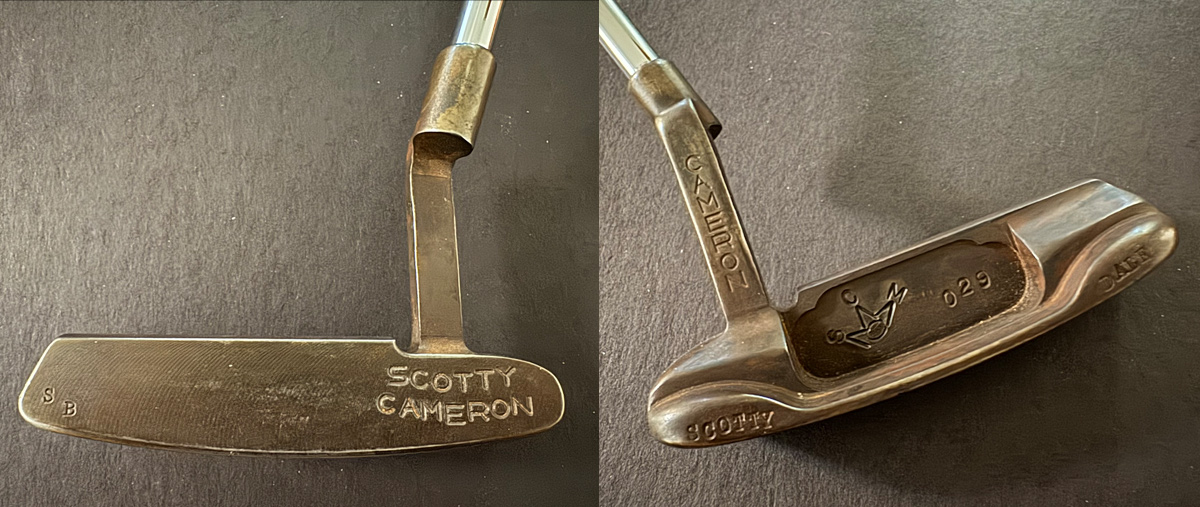
Above: Even after Scotty finalized the design of the Classic I, he continued to appeal to the tour players who used and loved the 30-year-old design that inspired it. They liked the feel of Scotty’s carbon steel, yet the shiny black oxide finish was unlike the “patina” that developed on those old magnesium bronze heads. As a result, Scotty developed a finish that was applied by hand and would age and darken like magnesium bronze. He also decided the sharper lines of the Classic I had to go for the most discriminating players. The solution was to shape and refine the contours of the head by hand, which took up to five hours to get the putter to look just right. Approximately 20 very special putters were marked 029 and/or Scottydale to pay homage to the zip code of Phoenix, Arizona where the original putters that inspired Scotty were produced. Here is an example of one that Scotty made for a five-time major champion. Notice the lines and the finish compared to the regular Classic I—it’s a striking difference. If you’re interested in collecting long-term and want to find putters that might otherwise “fly under the radar,” knowing what to look for can help identify the putters that Scotty spent hours working on. Over the last 15 years, I’ve only found about 10 different hand-shaped Newport Tour heads.
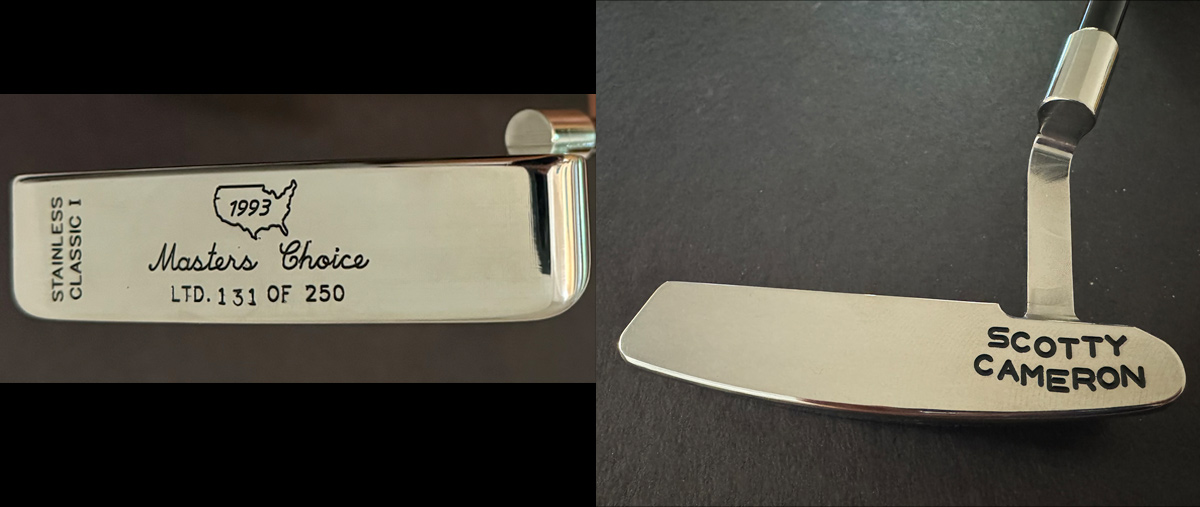
Above: One of the Classic I variations Scotty made before he joined forces with Titleist was the 1993 Master’s Choice. He produced 250 Classic I putters made from stainless steel, experimenting with the material that would be part of the Newport design starting in 2002.

Above: As a collector I also like the 200 prototypes Scotty made in 1994 that were copper plated, which may have influenced several variations of the Newport later in Scotty’s career. Scotty has referred to his eye for “industrial design” over the years and he likes how different materials age. As copper ages, it darkens and develops an unmistakable patina, so never clean a rare and collectible copper putter. It can take years to form this kind of look.
THE FIRST NEWPORT - 1995
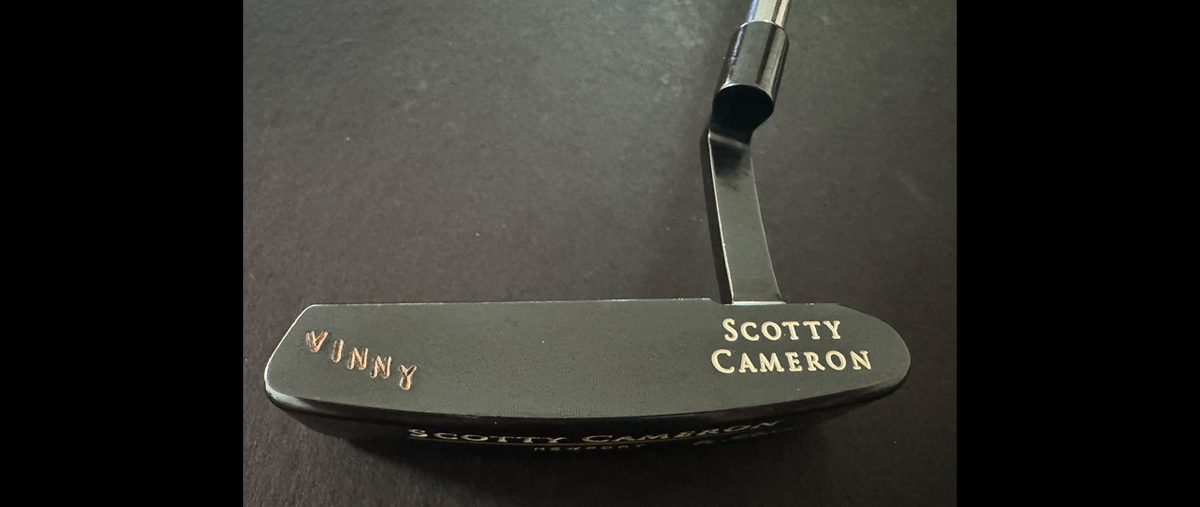
Above: Scotty’s next version of the design was the original Newport made for Titleist from 1995 through 1999. The lines are almost identical to the Classic I. Here’s a Titleist Newport that Scotty made for a former winner of the U.S. and British Amateur championship.
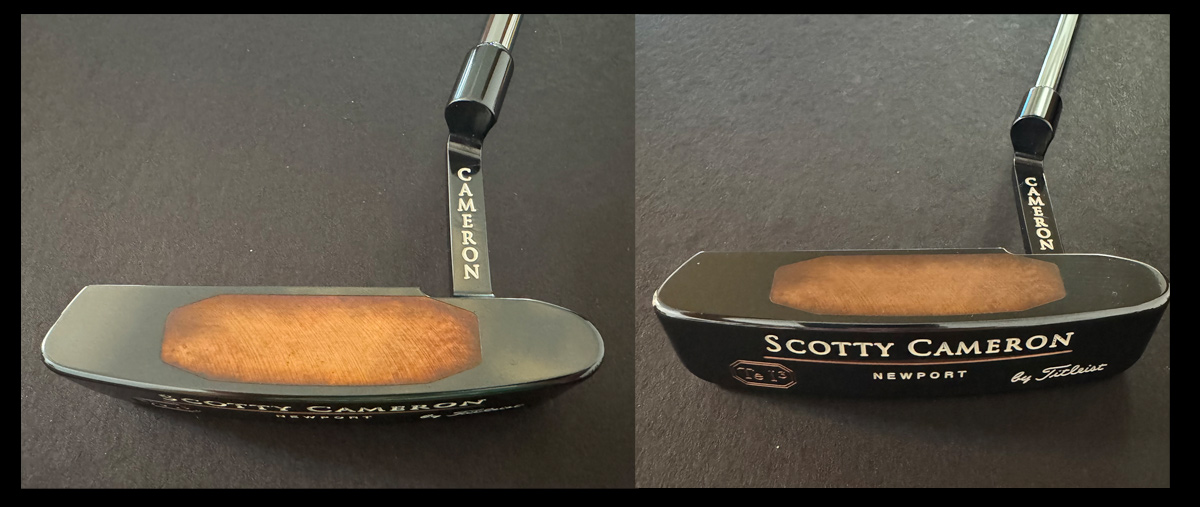
Above: The Newport design really took off after the first generation Teryllium insert Newport, referred to as the “Sole Stamp” Newport, was used to win the 1997 Masters. Along with Scotty’s win at the ‘93 Masters, the Newport and these major victories helped create Scotty mania! My collector’s eye is drawn to the very fine milling in the face of these putters. It’s unmistakable and has yet to be replicated. Trust me when I say this: if you want to add one of these to your collection, or just start a Cameron collection, find the nicest one you can find (even a nice used one) in original condition with these mill marks. Yes, a fully restored version looks perfect, not to mention bright and shiny, but it can’t compete with a nice original one. It’s not just me, a lot of collectors are increasingly looking for these putters in original condition primarily for the look of the face milling.
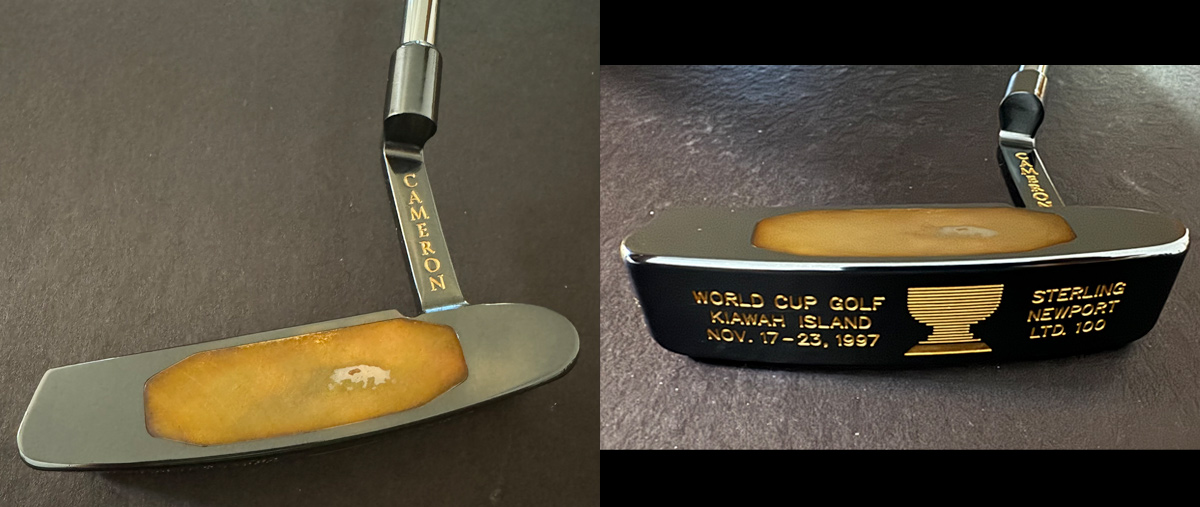
Above: One particularly fun variation of the Newport is a very rare one. In the mid-1990s Scotty also experimented with sterling silver inserts. In additional to a handful of one-of-a-kind prototypes he made for various tour players, Scotty also made a series of Newport models (standard plumber's neck, along with mid-and long slant necks) for the Japanese market. Even rarer are 100 putters he made with the same sterling silver insert for the 1997 World Cup. Rumor has it that one of the European players playing in the event bought eight (!) of the putters, and that a former president also purchased one for his collection.
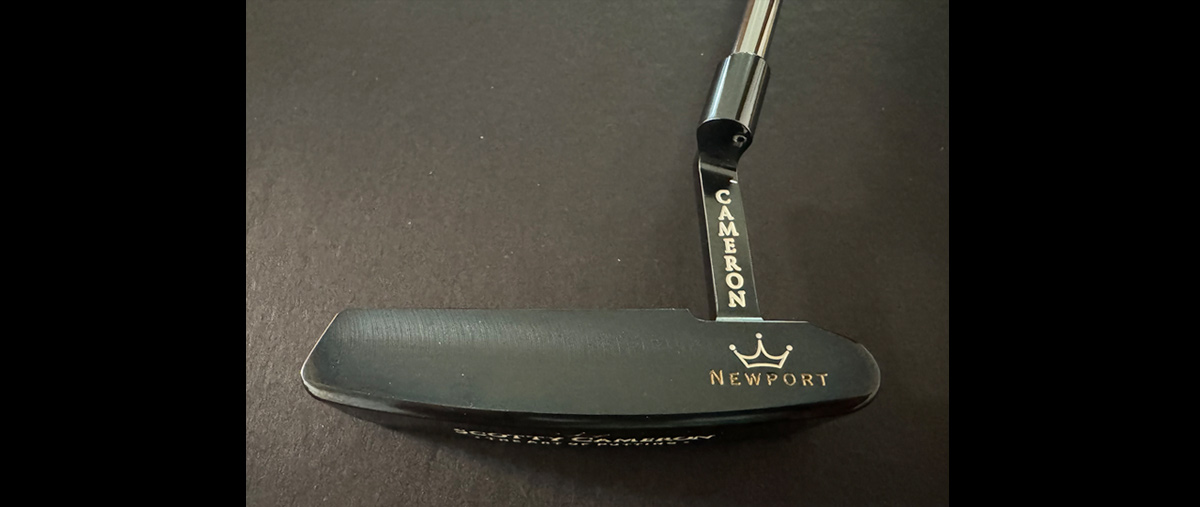
Above: Here's an example of the Art of Putting Newport, produced in 1998 and 1999, which has the same lines of the earlier Newport but with Scotty's oil can finish. You might get lucky and find a couple of different variations of this model, with the most popular one being the 350-gram version in a length of 33" which is very hard to find. Secondly, you may see one of these “oil can” heads but in a black oxide finish, which is what I’ve pictured here.
The original oil can finish, which was designed to age and develop a patina, proved too finicky for some consumers and rainy climates tended to speed up the aging of the oil can finish. Finally, you might find a Newport with an “oval track” cavity, another variation that appeared during the last year of production. While little is known about the genesis of this design change, during one of my early visits to Scotty’s original studio in 2000, he meticulously reduced the weight on a Newport for the tour from 330 grams to 325. It had an oval track and Scotty was able to precisely reduce the weight to the exact number by milling the cavity slightly deeper. The prior cavity design with the “ears” in the top corners would have added some complexity to that process!
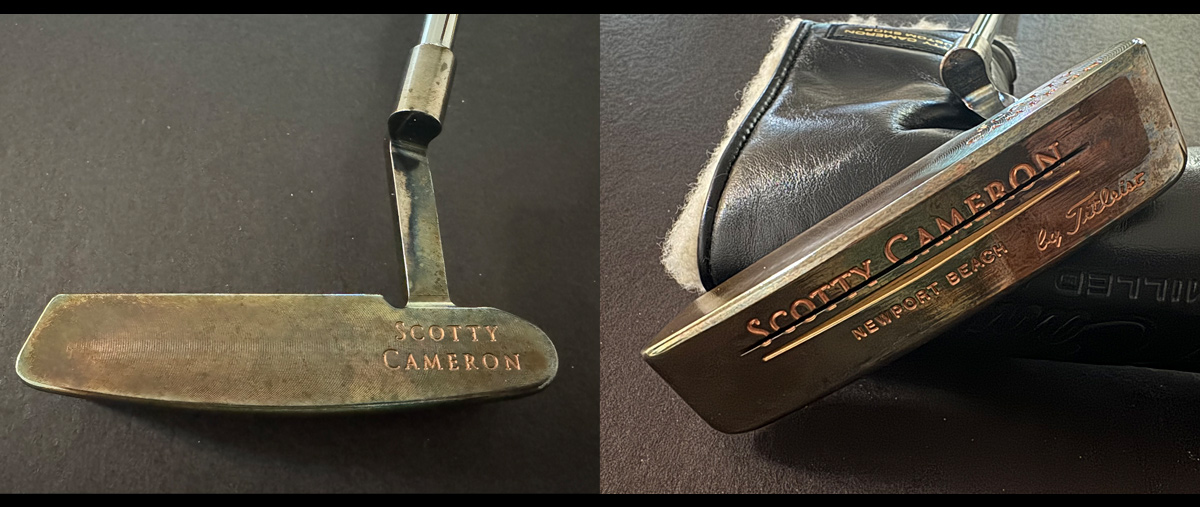
Above: This is one of only a very few Newport Beach putters made in 1997 with Scotty’s experimental oil can finish. The Newport Beach differs from the Newport in that it has the classic “floating face” (slit in the sole) and a flat topline as opposed to the curved topline as seen on the Newport. The floating face tends to produce a slightly louder sound at impact, which tends to influence the player’s perception of feel. As Scotty says, "sound is feel" and most people are likely to perceive this putter as having a firmer feel. Because this putter is so rare, very few people have seen one and that lack of exposure to today's collector tends to make these underappreciated.
THE CULT CLASSIC - THE SECOND GENERATION NEWPORT
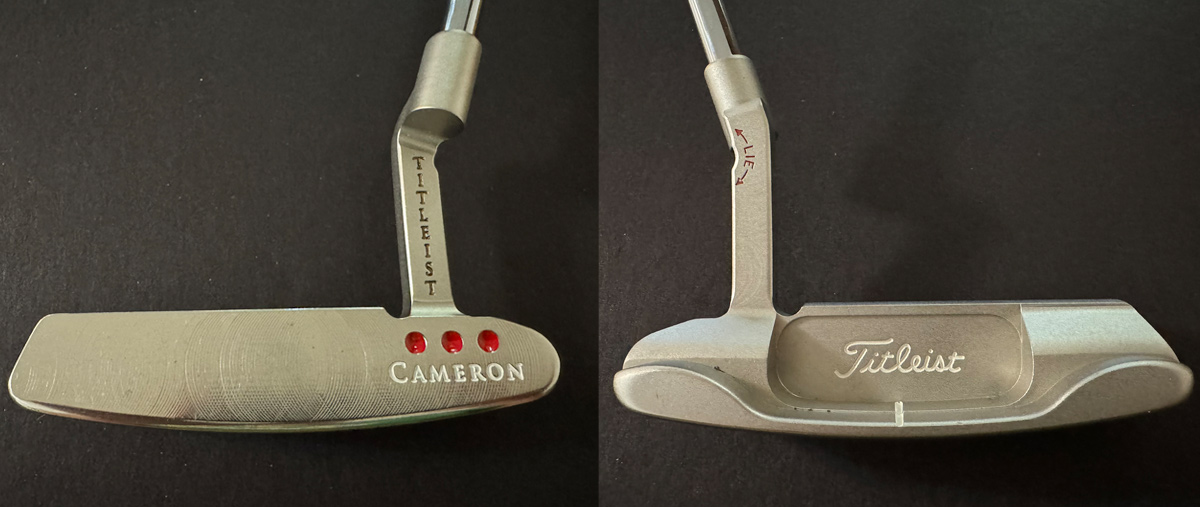
Above: The year 2000 brought a new version of the Newport, what I'd call the "cult classic" Mil-Spec. I hear a lot of people refer to this as the “poor man’s 009” (more on the 009 later) as the design shows some evolution towards a softer look of the lines of the putter head. The Mil-Spec line also gave players greater flexibility in fitting. The head was available in weights between 320 and 350 grams (in matching lengths from 36” to 33”) along with flat, standard and upright lie angles.
Notice the neck and the notch in the top. This was Scotty’s way of making it easier to change the lie angle of the putter to accommodate different setup positions. Scotty has always been great in listening to tour players and making design changes; this is a change that benefitted the consumer. Lie angle is important for your irons, yet it’s arguably more important for your putter as the tolerances on a putt are much more critical. It amazes me when I see a PGA Tour player (typically one not playing a Cameron putter) who has the putter sitting up on the toe with the heel in the air at address. Although a putter has little loft, the incorrect lie angle is enough to impact the start line of even a perfectly struck putt.
Not only were the overall lines a little softer on the Mil-Spec, the putter for me also appears a little longer from heel to toe, although during the writing of this I did something that had not occurred to me in over 20 years— I had to measure the length of the Mil-Spec blade to the 1995 Newport. I was shocked to find they’re the same length! It could be that the shape of the shoulders, as they gracefully fall, make the putter appear to be shorter from front to back. This shows the power of design and how even the smallest of changes can impact how the player sees the putter at address.
THE ULTIMATE DESIGN - THE 009

Above: The Newport “gold standard” otherwise known as the 009 (“double-oh-nine”) was introduced to the tour in 2004. The 009 is named for the zip code in Carlsbad, California (92009). Recall the 20 Classic I 029 Scottydale putters Scotty made for the tour in 1993 to 1994; Scotty hand worked the heads to soften all the lines. Advances in milling technology allowed Scotty to create a Newport head with virtually all those soft lines without the time intensive work by hand. Of note is the bevel in the top of the bumpers and along the edges of the neck. This example is one Scotty made for a collector’s event in 2007 with unusual stampings—Scoty Dale and Carlsbad. It’s an homage to those rare Classic I 029’s as it has a lot of the same look to the stampings and even has dirty white paintfill to mimic the look of a putter that’s been around for a long time.
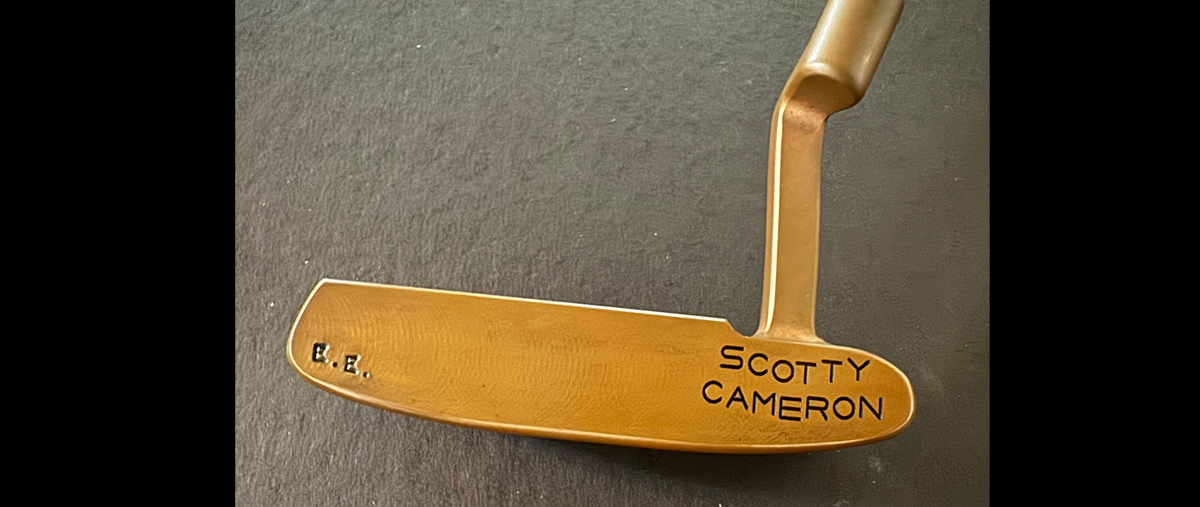
Above: One of my favorite variations of the 009 head is the BBC—Billet Block Copper. Scotty made 50 of these heads in 2004-2005 for the tour and the collector’s market. Compared to the copper plating (on a carbon steel head) found on the 1 of 200 Classic I prototypes and the 500 limited edition sets Scotty made for Titleist in 1996, solid copper tends to have a slightly softer feel. Yet the floating face tends to produce a louder sound and appealed to tour players who liked the old putters that inspired it, wanted the crisp sound they made, but needed a softer feel for the faster greens on the tour in the 2000s. Here’s one of the first BBCs made for a three-time major champion.
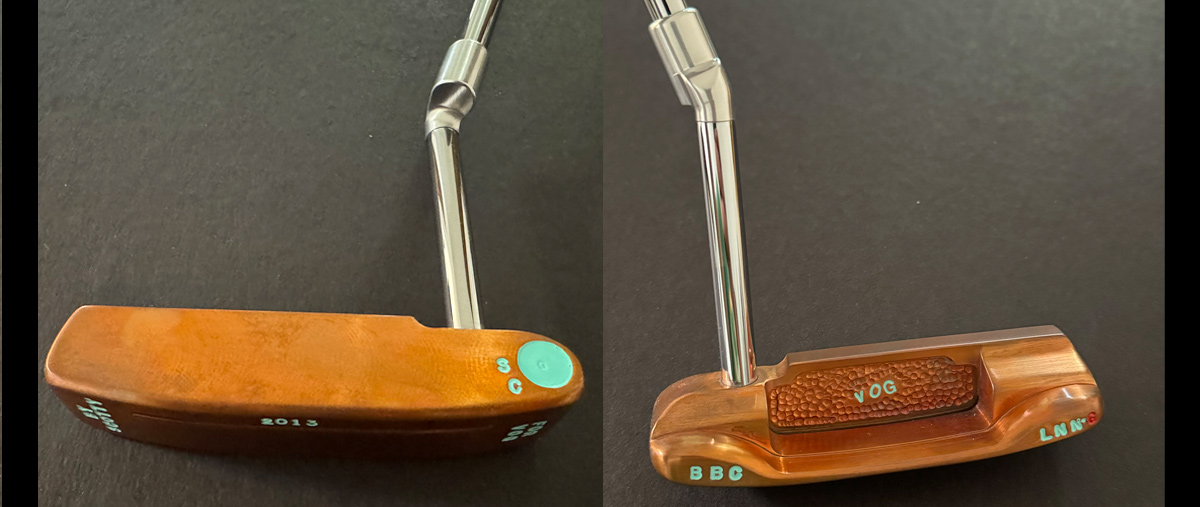
Above: Here's another version of the BBC/Newport head that was only made in very limited quantities for a few tour players and lucky collectors. The BBC Knucklehead features the same head but instead of a conventional neck, it has an aluminum knuckle that creates a plumber’s style neck with the tip of the shaft inserted into the head. So, what’s the purpose of this design? For one specific tour player who loved the BBC and played it a lot, the Knucklehead fixed a problem he had with the soft copper. As the story goes, he was known to lean on his original BBC putter and bent the neck on several occasions because the metal was so soft. The tip of the shaft, which replaced the neck, was stronger than the copper and would not bend. For this example, one that Scotty made for me in 2013, I wanted a long neck BBC, which Scotty didn’t make as a one-piece putter. I suppose he could have found a carbon or stainless long neck and welded or affixed it in another manner, but the overall weight of the putter would have been too heavy.

Above: The knuckle construction (note: historically referred to as "Knuckle", "Nuckle", "KnuckleHead" and "Knuckle Neck" in various instances; means the same thing) only added 5 grams of weight to the head (this was a BBC-X head designed without a neck) and allowed Scotty to make a longneck BBC in the weight I needed. Scotty continues to use the Knucklehead for the tour, mostly on mallets where the head is already heavy. While heavier heads are more popular on tour, if a putter gets TOO heavy, it tends to impact the transition in the player’s stroke.
2008 STUDIO SELECT
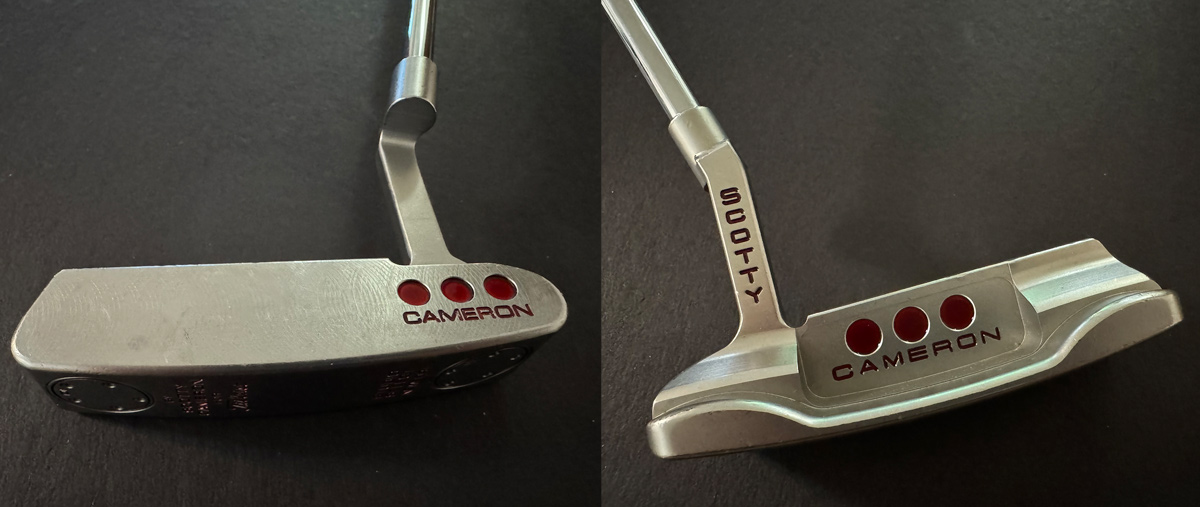
Above: The 2008 version of the Newport is noteworthy primarily because it was the first putter Scotty offered with interchangeable weights. While the Mil-Spec introduced different head weights for the first time, if you had a 350-gram version and needed a 330-gram head to match the desired length of the putter, you were out of luck. The design was also a result of something Scotty had shared with me years ago about how players view the putter at address. He had noticed how some players putted with the toe of the putter noticeably in the air and in talking to them, they just liked how that high toe looked while standing over a putt. The Studio Select Newport has a noticeably higher toe and deeper face to create that same look while not impacting the lie angle at address. Finally, notice the soft looking shoulders, with no sharp lines and the shoulders gently sloping towards the cavity and the heel and toe-something first seen on the Mil-Spec in 2000.
2012/2014 NEWPORT SELECT
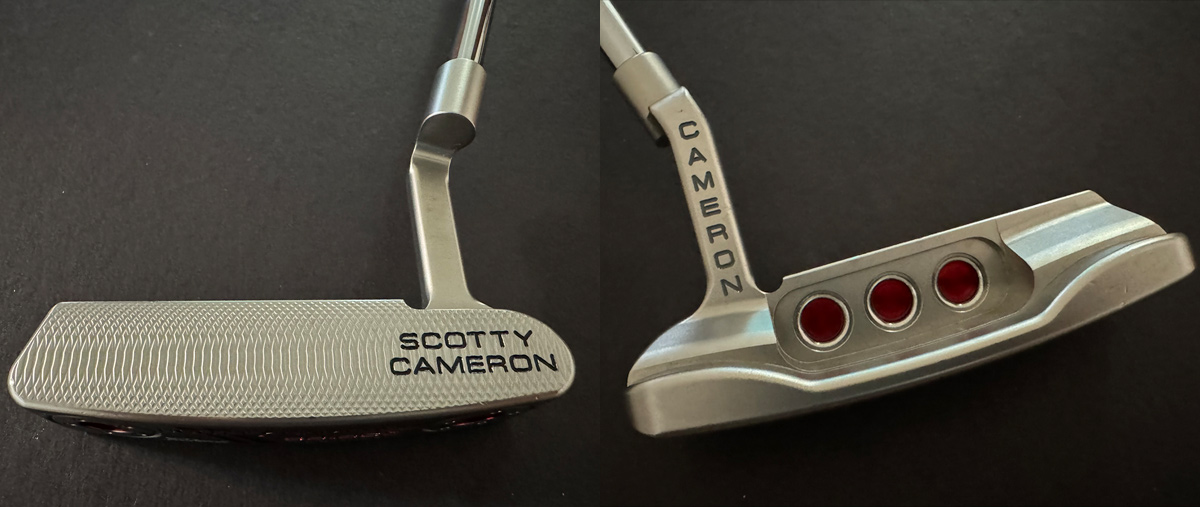
Above: This iteration of the Newport is probably overlooked for its contribution to today’s Newport; to my eye it’s as significant to the evolution of the Newport as the Mil-Spec. First off, the putter is the first production model to feature Scotty’s deep milling, done to enhance the feel of the stainless steel construction. The deep milling produces a softer feel, more important than ever due to faster green speeds.
Just as importantly, a lot of the softer lines of the 009, specifically around the edges of the neck and along the back line of the putter, show up in the Newport Select. Finally, you may find this version of the Newport to look a bit stubby as well. In comparison to all its predecessors, the length of the Newport Select is shorter from heel to toe, which I tend to see in the width of the cavity. It’s impossible to capture in pictures but very easily seen in person. If you like very soft lines with a roly-poly look, this might become your favorite Newport.
OTHER NEWPORT VARIATIONS
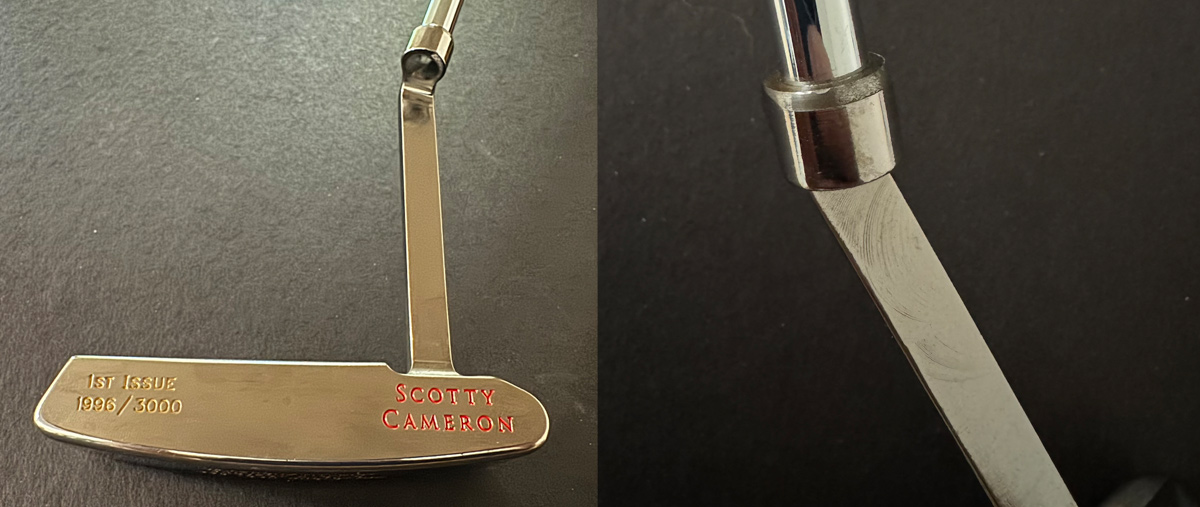
Above: Scotty did experiment with a longer neck version of the Newport head in the mid-to-late 1990’s. Using the Scottydale name again, he first produced 3000 of the Project XSLC (SLC being the initials of Scotty’s oldest daughter) in a black star finish for the Japanese market in 1996. This putter was the model used by the one and only 15-time major champion to secure his first two wins on the PGA Tour. Due to concerns about the putter’s conformity to the rules of golf, Scotty tried several different things to ensure the neck wasn’t too long. Here are three examples of what he did. Putter number one had the top of the cup on the neck shortened after the putter was finished (as you can see the loss of the plating at the very top of the neck).
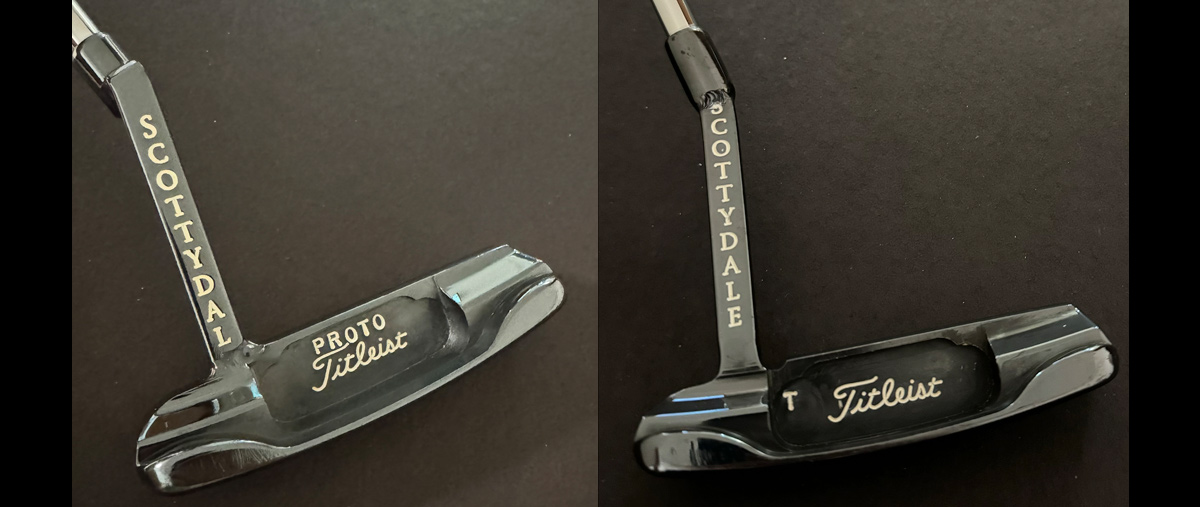
Above: Putter number two: Scotty cut off the neck, shortened it at the base and welded it back to the head. And the third putter: Scotty cut off the cup, welded it directly to the top of the neck, and bent the neck forward to create the first slant neck design. All these were made for the tour, and often don’t get the love they deserve when they do surface.
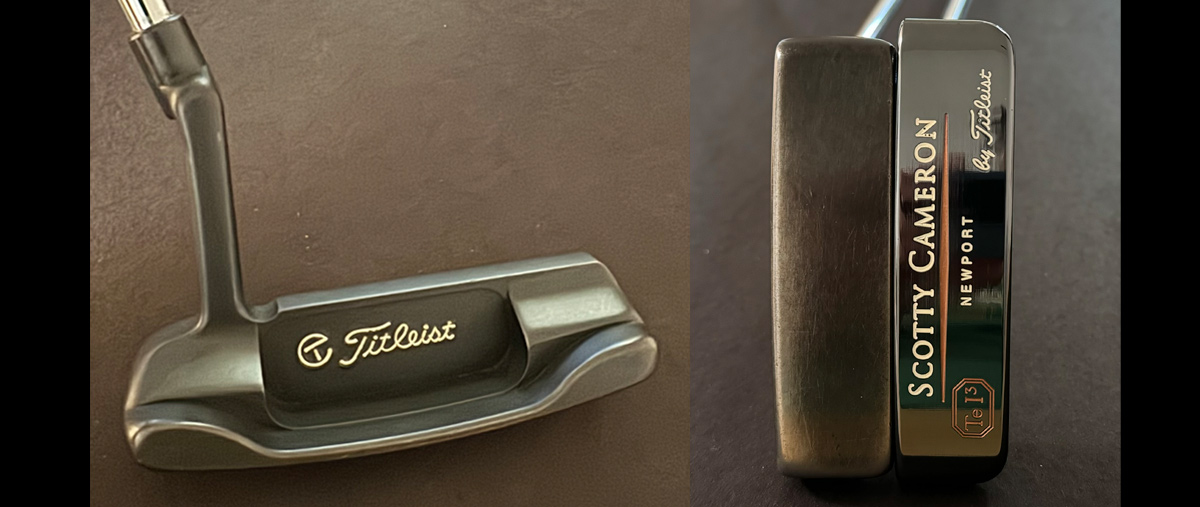
Above: A variation of the original Classic I head I had not previously mentioned is the “Mini,” a scaled down version that Scotty was working on when he and his wife were expecting their first child. The Mini is considerably shorter heel to toe compared to the Classic I.
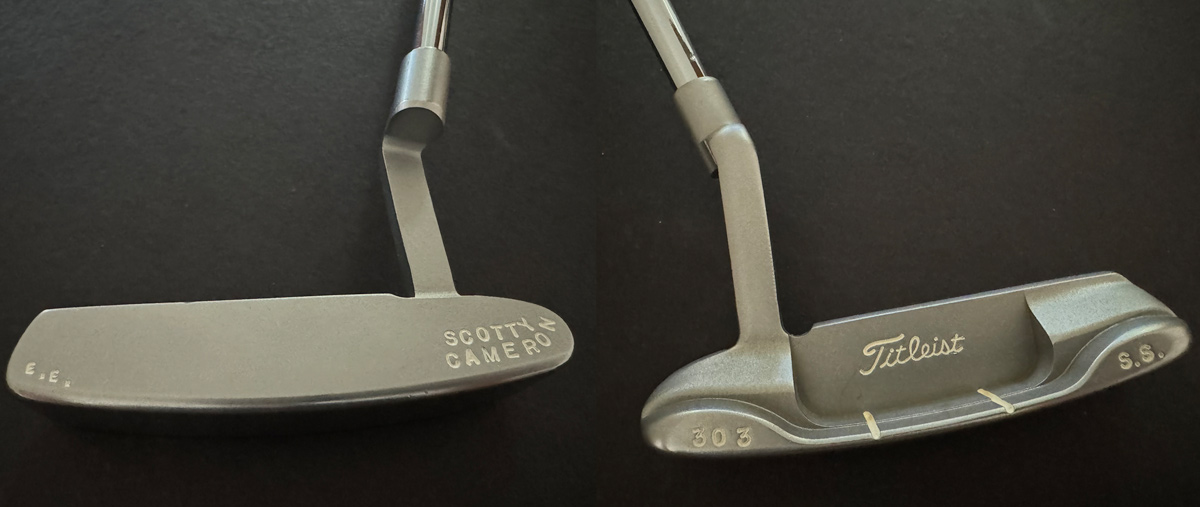
Above: Here's an unusual variation of the Newport for the tour, a solid cavity that was hand worked for a three-time major champion. While the solid cavity first appeared on the 1998-1999 Newport 350-gram design, Scotty again used that head as a platform for this putter. It’s an example of a head that Scotty removed a lot of weight in softening the lines, perhaps necessitating the use of a heavier head to start the project. The neck is softer and more rounded. The shoulders and bumpers are softer with all the sharp lines removed.

Above: Look at the shaft cup at the top of the neck. Scotty gently removed the edge of the cup to smooth the look from address. Even the topline has been worked; the height of the face is lower and the “cup” at the base of the neck is shallower as well!
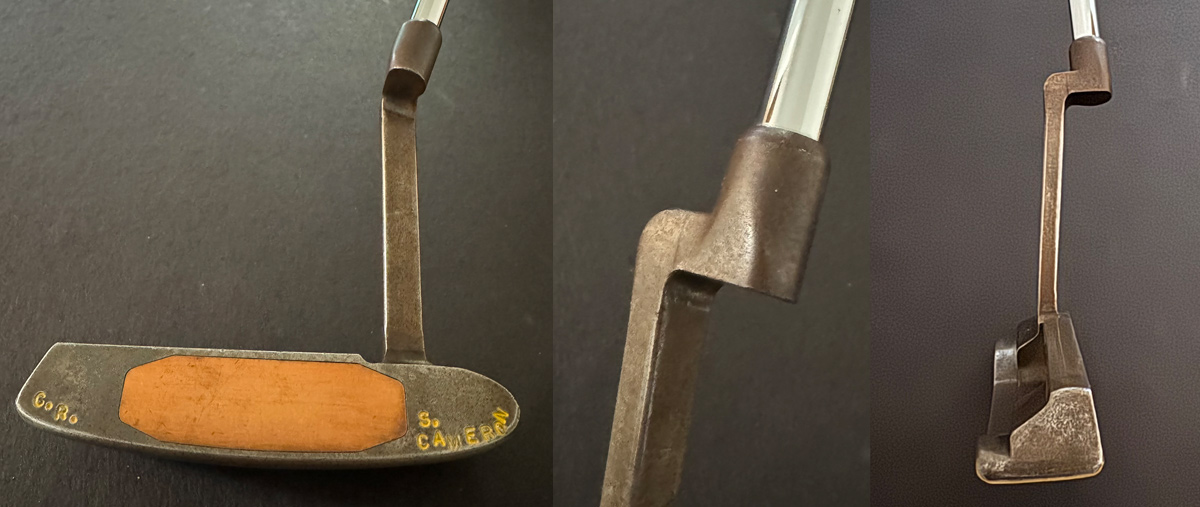
Above: This final old school example is a longneck Newport Teryllium Scotty made for the tour. Apart from the S. Cameron stamping on the face (often designates a putter Scotty put a lot of hand work into the final design), it’s a putter that could easily be overlooked by less experienced collectors. In this case the S. Cameron stamping is right on the mark. Look at the hosel cup. Scotty shaped it like some of my other examples to provide a smooth look at address. The neck itself has been bent forward as well; it’s a combination of a long plumber’s neck and a slant neck. From address, it has a lot of offset—more than a normal plumber's neck.
TODAY'S NEWPORT - SUPER SELECT
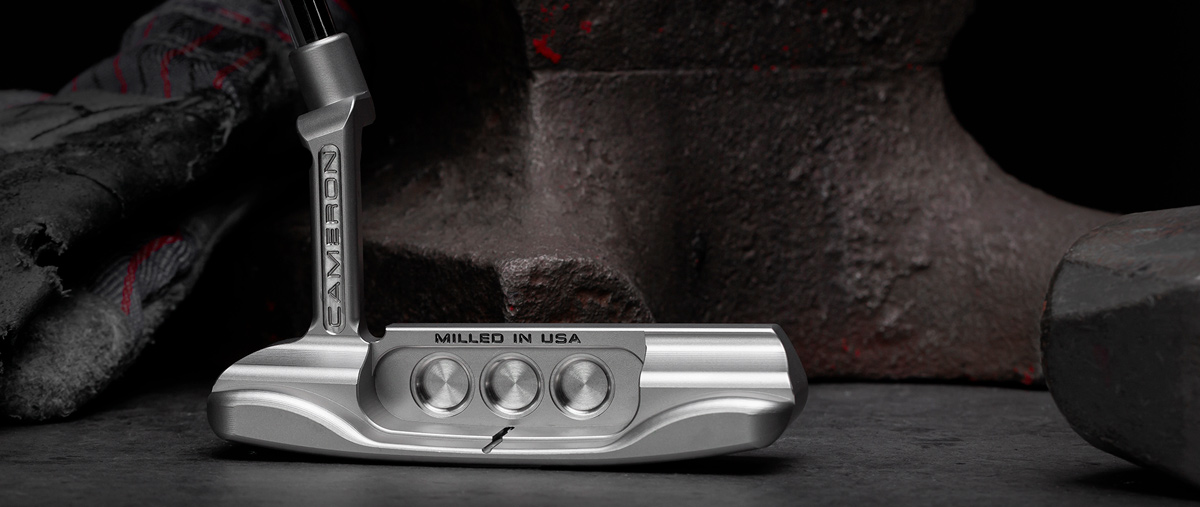
So, what’s the design philosophy of the Newport in 2024? From my perspective, everything Scotty has learned over the last 30 years is incorporated into the design. As green speeds increased and tour players changed their strokes to adjust, around 2010 Scotty started to increase head weights, which bulked up the lines of the Newport. Each putter length was approximately 10 grams heavier than the weight of his putters prior to 2010. As a result, the Newport (and Newport 2) just looked a little too bulky for Scotty’s eyes.
Starting with the Special Select design of 2021 and continuing with the Super Select series, Scotty put the Newport on “a diet.” He slimmed out the lines and the size of the shoulders. On the Super Select, he added the “I-beam” neck design, reducing even more weight from the neck and redistributing it to the heel and toe areas. The result is that for the same length putter, 2024 versus 2019, the changeable weights have 30 grams more combined mass in them, yet the overall weight of the putters are the same. That means the Newport has great Moment of Inertia (MOI) properties combined with classic lines. Not only classic lines, but softer lines as well:
- The character line on the shoulders, which used to be crisp on the original Newport, is nicely beveled. We first saw this on the Mil-Spec.
- The top of the bumpers and the trailing edge at the rear of the flange has similar beveling but hadn’t been seen on anything other than the tour 009.
- The elbow of the neck is nice and flat on the front from address as well.
In 1993, Scotty did all this by hand, for 20 demanding tour players. In 2004, if you were fortunate and had several thousand dollars, you could buy all these features in Scotty’s 009 tour putter. With today’s Newport Super Select, you too can get these design features; all tour tested, refined by Scotty’s eye and perfected by technology.
For the latest Scotty Cameron Newport designs, check out the Super Select putters.
